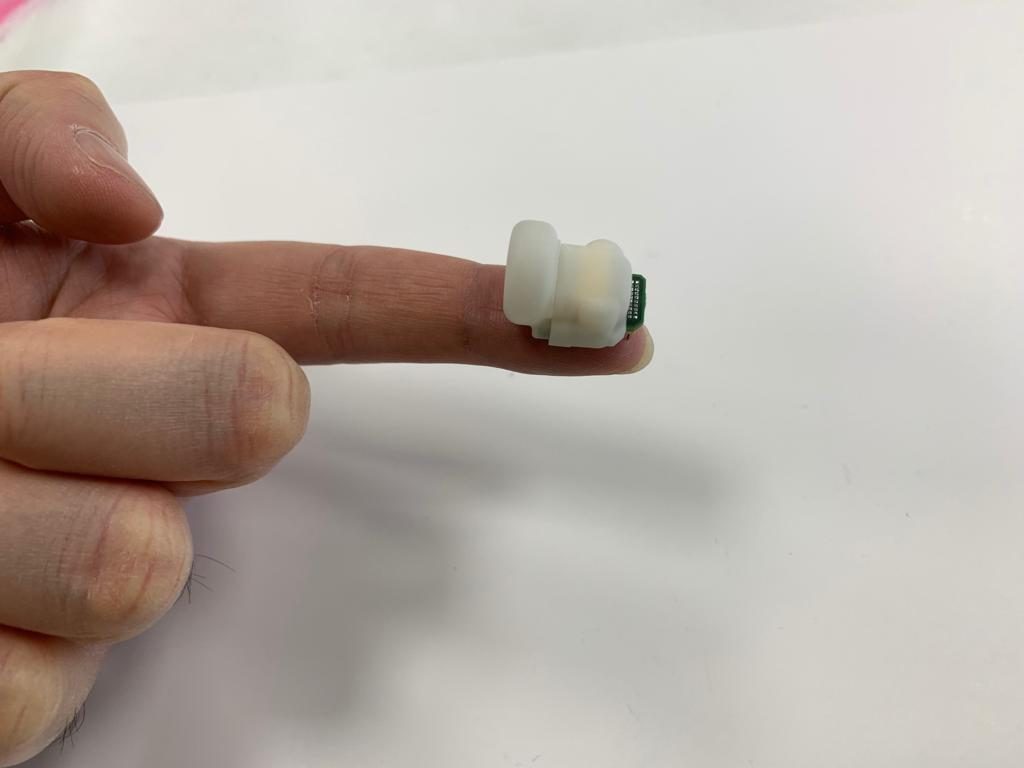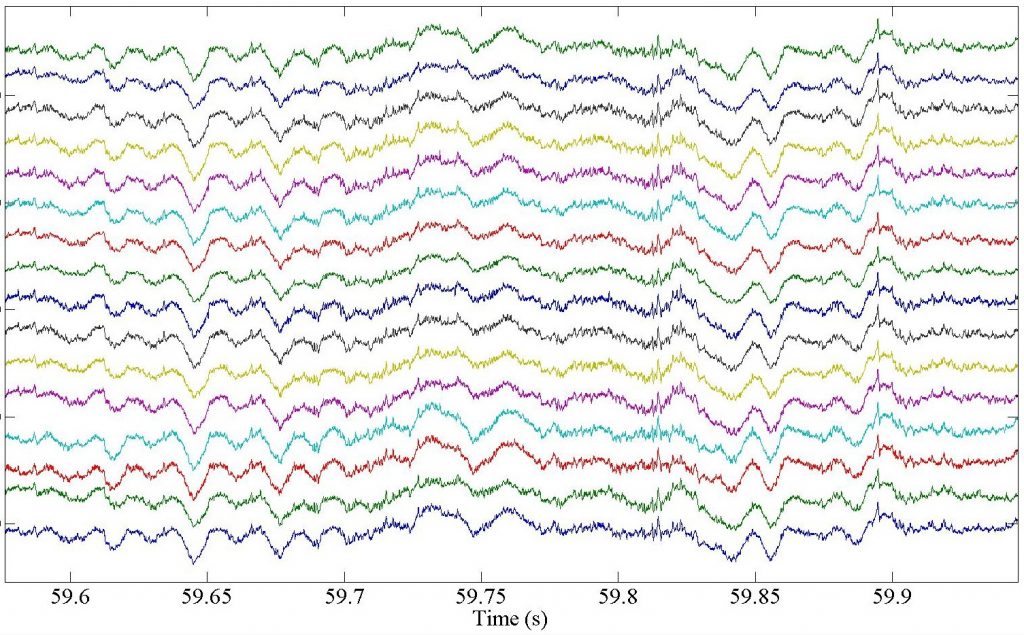About TAINI #
TAINI is a novel wireless neural recording system based on a customized Application-Specific Integrated Circuit (ASIC) created using innovative ultralow power design techniques.
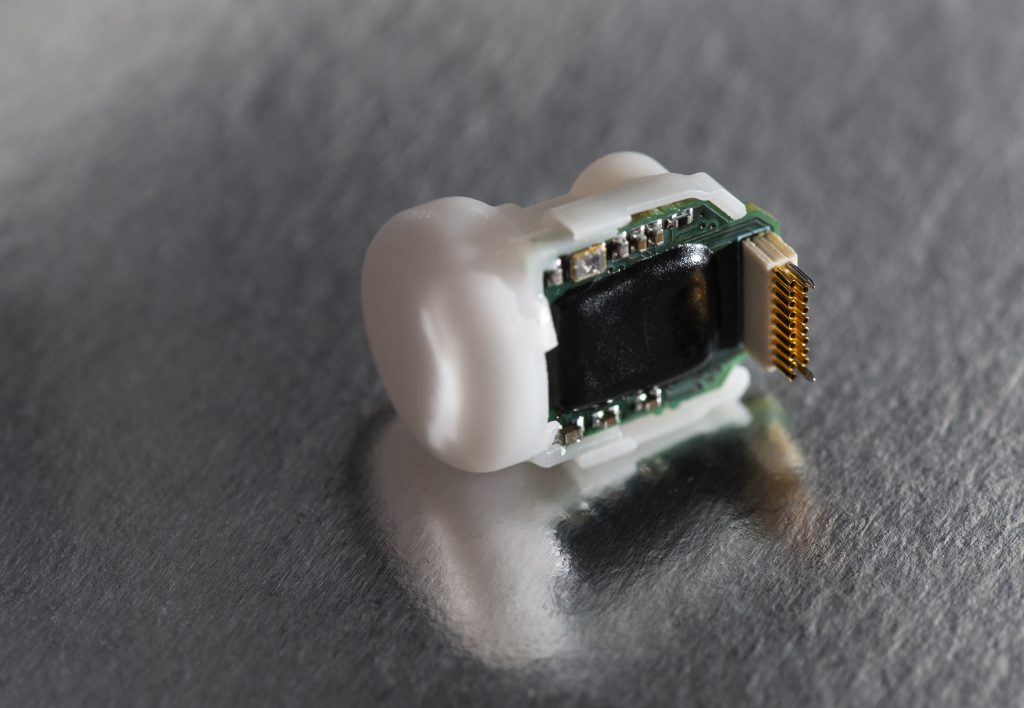
Circuit blocks incorporated in the ASIC include low-noise neural amplifiers & filters, high-precision analog-to-digital converters (ADCs), digital multiplexing circuits, and low-power wireless RF transmission blocks. Benefiting from this system-on-chip (SoC) innovation, it maximizes the system’s performance while reducing the total weight down to 1.5g. This system represents a significant advance in scalable recording systems for small rodents and provides a robust foundation for additional designs.
TAINI is a novel ultra-lightweight (starting from 1.5g) low-power wireless neural recording system allowing ultra-long hours (up to 120 hrs) of recording from 16 channels sampled at up to ~19.5 kHz (9.7 kHz bandwidth) for each channel. It captures EEG signals, local field potentials (LFP), action potentials (AP), and EMG activities while animals (e.g., mice, rats) engage in unrestricted behaviour in a variety of environments and while performing tasks.
Together with our TAINILIVE software, users are able to view the live recorded signals while configuring the recording settings or running animal experiments.
The TAINI system can also be synchronized with other external systems, such as video tracking, which allows the recorded data to be synchronized to animals’ behaviour with sub-second precision.
TAINI Products (Key Specifications) #
| TAINI Device Model Name | Battery Lifetime (hours) | Enclosure Type | Weight (gram) | Number of Channels | Sampling Rate per Channel (samples/second) | -3dB Acquisition Bandwidth (Hz) | Simultaneous System Recording |
|---|---|---|---|---|---|---|---|
| TAINI 20/16/72/NOA | 72 | No Enclosure¹ | 1.5 | 16 | 19500 | 0.35 to 9700 | Typically 4 transmitters/room² |
| TAINI 20/16/72/LOA | 72 | Lightweight | 1.8 | 16 | 19500 | 0.35 to 9700 | |
| TAINI 20/16/120/LOA | 120 | Lightweight | 2.2 | 16 | 19500 | 0.35 to 9700 | |
| TAINI 20/16/72/SOA | 72 | Strengthened | 2.1 | 16 | 19500 | 0.35 to 9700 | |
| TAINI 20/16/120/SOA | 120 | Strengthened | 2.4 | 16 | 19500 | 0.35 to 9700 |
¹ TAINI enclosure provides a limited level of water-splash resistance and mechanical protection to the TAINI transmitter. It is especially important when users want to run long recordings while animals need to have access to food and water.
² Customized solutions are available to help users run more TAINI transmitters (e.g., 8, 16, and 32) simultaneously.
General Technical Specifications #
Power Characteristics #
| Parameter | Min | Typ | Max | Units | Note |
|---|---|---|---|---|---|
| Supply voltage range | 1 | 1.4 | Volt | ||
| Average current draw | 2 | mA | |||
| Peak current draw | 2.5 | mA | |||
| Battery capacity | mAh | Typical Zinc Air battery (size code 312 & 13) |
Signal Characteristics #
| Parameter | Min | Typ | Max | Units | Note |
|---|---|---|---|---|---|
| Number of channels | 16 | ||||
| Input voltage range | 13 | mV | Maximal input signal (pk-pk) | ||
| Sample size | 12 | bit | |||
| Common mode rejection ratio | 78 | dB | |||
| Power supply rejection ratio | >46 | dB | |||
| Input referred noise | 3.9 | µV | RMS (0.35 to 9700Hz) |
Wireless Communication Characteristics #
| Parameter | Min | Typ | Max | Units | Note |
|---|---|---|---|---|---|
| Transmission range | 2.5 | meter | Received SNR = 20 dB (dependent on experiment set-up) | ||
| Transmission protocol | Customized protocol with package size of 810 bits | ||||
| Transmission modulation | BASK digital modulation scheme | ||||
| Typical package loss | 1% | Dependent on experiment environment & set-up |
Physical Characteristics #
| Parameter | Min | Typ | Max | Units | Note |
|---|---|---|---|---|---|
| Length | 19 | mm | Edge to edge (including connector & enclosure) | ||
| Width | 14.5 | mm | Edge to edge (including connector & enclosure) | ||
| Height | 15.5 | mm | Edge to edge (including connector & enclosure) | ||
| Electrode interface | Omnetics A79039-001 connector³ |
³ TAINI transmitters can also be customized with different Electrode Interface connectors.

TAINI Software Features #
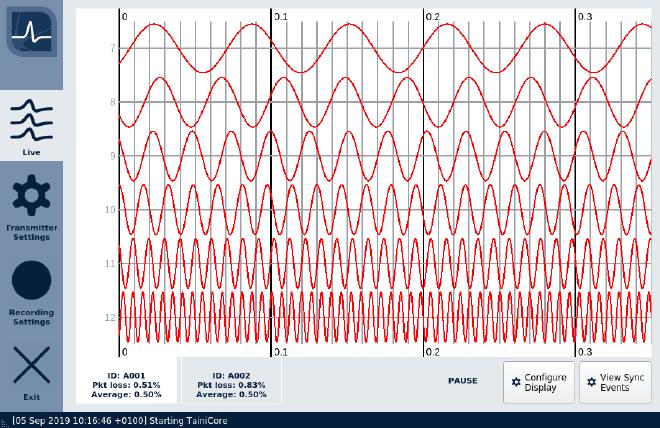
The TAINILIVE software that comes with TAINI transmitters allows users to view live signals being received from TAINI transmitters, as well as record them for offline analysis. Some of the benefits of TAINILIVE include:
- Live viewing of signals enables verification of electrode placement during adjustment and allows scientists to monitor experiments in real-time.
- Configurable recording settings to suit various experimental needs.
- Synchronization with external systems, such as video tracking, for comprehensive behavioural analysis.
- User-friendly interface designed for efficient experiment management.
- Compatibility with various operating systems for broader accessibility.
- Support for data export in multiple formats for further analysis.
- Real-time signal processing features to assist in immediate data interpretation.
- Secure data storage options to ensure the integrity of recorded information.
- Regular software updates to incorporate the latest features and improvements.
- Comprehensive user support and documentation to assist with software utilization.
Animal Welfare and Scientific Benefits #
The TAINI device offers significant animal welfare and scientific benefits compared to other wireless and tethered devices on the market (see the Comparison Table). Mice wearing the TAINI device can freely move around their cage and maintain the normal repertoire of movements and behaviours which are not possible with other wireless and tethered systems.
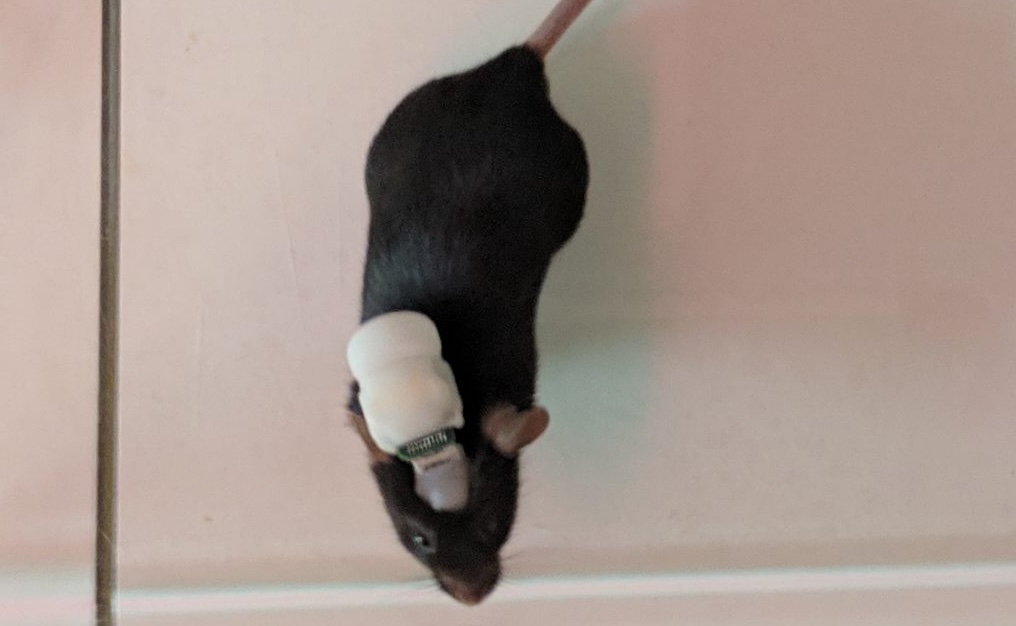
The ultra-lightweight TAINI device resulted in significant improvements in the ability to complete trials (e.g. T-maze task), which increases statistical power and reduces the number of animals required for certain experiments. Importantly, recordings using the TAINI device can now be taken in automated testing arenas linked to the animal’s home cage, where mice have a choice of when they perform behavioural tasks, with the advantage of avoiding repeated handling that can be stressful. Additionally, animals now can be group-housed to conduct innovative social experiments with continuous long-term neural recordings.
Note: More detailed information can be found in the following published paper in Nature Scientific Reports:
Jiang Z, Huxter JR, Bowyer SA, et al., 2017, TAINI: Maximizing research output whilst improving animals’ welfare in neurophysiology experiments, Scientific Reports, Vol:7, ISSN:2045-232 https://doi.org/10.1038/s41598-017-08078-8
